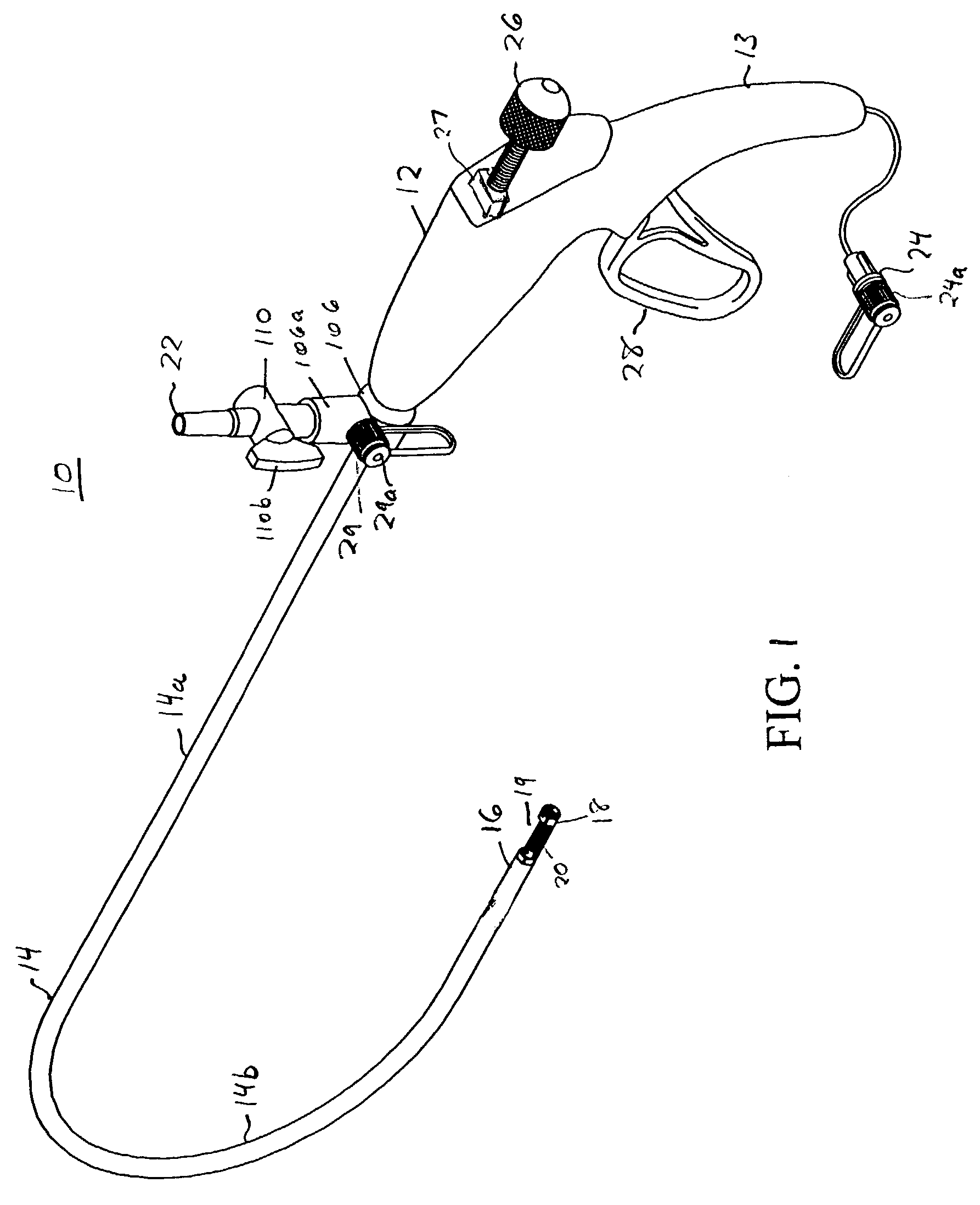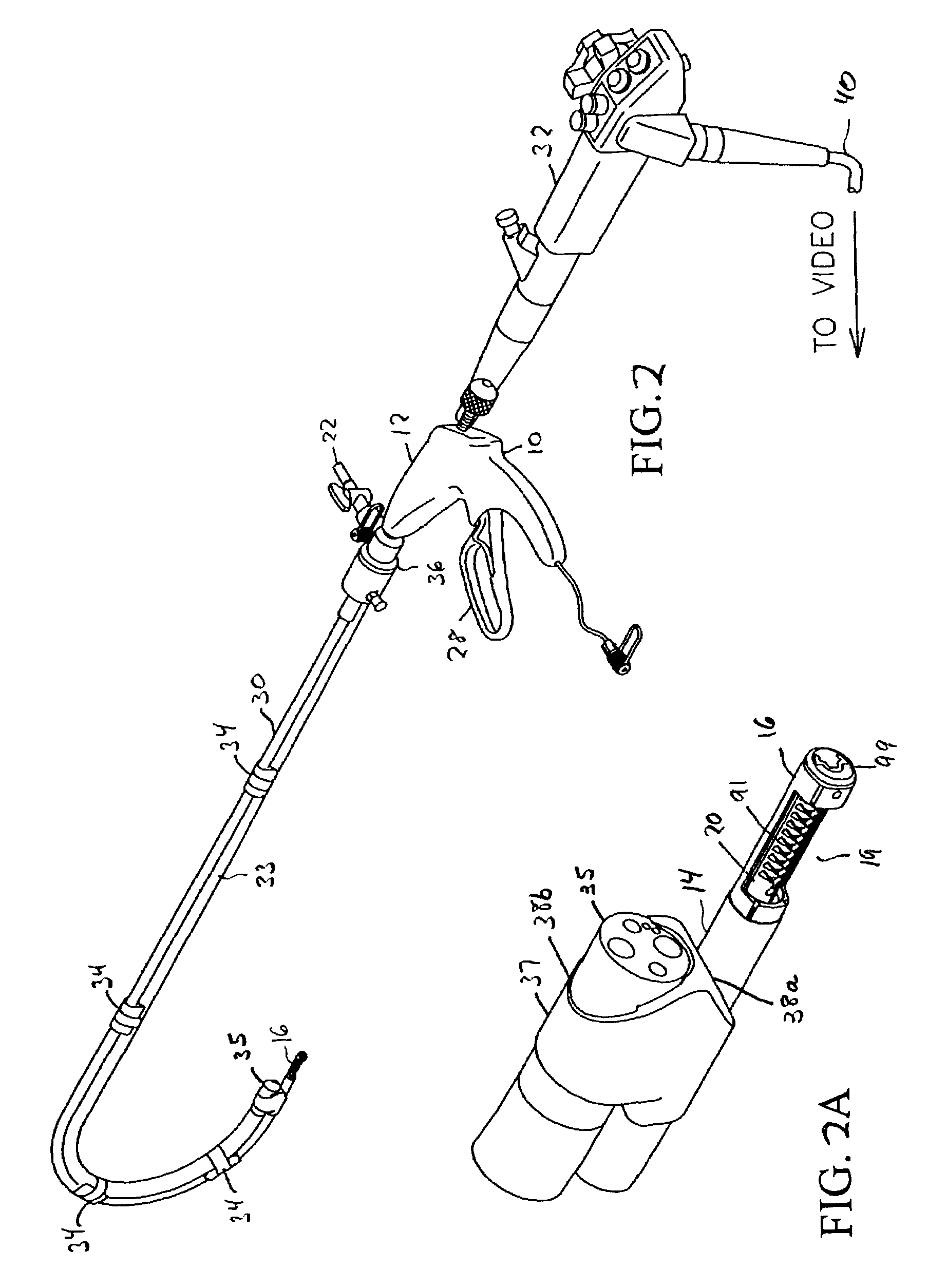Instrument for surgically cutting tissue and method of use
a tissue and surgical technology, applied in the field of instruments and methods for surgical cutting of tissue, can solve the problems of difficult for such instruments to harvest tissue from patients difficult for such instruments to achieve tissue extraction under realistic clinical conditions, and lack of tissue plane separation capability at site prior to tissue removal, etc., to facilitate diagnosis of possible abnormal tissue, facilitate accurate apposition of edges, and promote primary healing
- Summary
- Abstract
- Description
- Claims
- Application Information
AI Technical Summary
Benefits of technology
Problems solved by technology
Method used
Image
Examples
Embodiment Construction
[0072]Referring to FIG. 1, the instrument 10 of the present invention is shown having a housing 12 and a shaft 14 extending from the housing 12 to a distal end 16. The shaft 14 has a first rigid section 14a and then a second flexible section 14b to facilitate location of the distal end 16 along the curvature of a tubular structure, such as along the gastrointestinal tract, urinary tract, or vascular structures of a patient's body. The shaft 14 is of a cylindrical cross-sectional shape with an outer diameter enabling the shaft to be inserted in a tubular structure to locate the distal end 16 in such tubular structure of a patient. The housing 12 has a body shaped like a pistol having a handle portion 13, and may be made of a two-piece construction of molded plastic. At the distal end 16 of the shaft 14 is a distal housing 18 with an opening 19 to a cavity 20. The instrument 10 has a vacuum port 22 along shaft 14 for applying suction to the distal end 16, a turn screw 26 for controlli...
PUM
 Login to View More
Login to View More Abstract
Description
Claims
Application Information
 Login to View More
Login to View More - R&D
- Intellectual Property
- Life Sciences
- Materials
- Tech Scout
- Unparalleled Data Quality
- Higher Quality Content
- 60% Fewer Hallucinations
Browse by: Latest US Patents, China's latest patents, Technical Efficacy Thesaurus, Application Domain, Technology Topic, Popular Technical Reports.
© 2025 PatSnap. All rights reserved.Legal|Privacy policy|Modern Slavery Act Transparency Statement|Sitemap|About US| Contact US: help@patsnap.com



